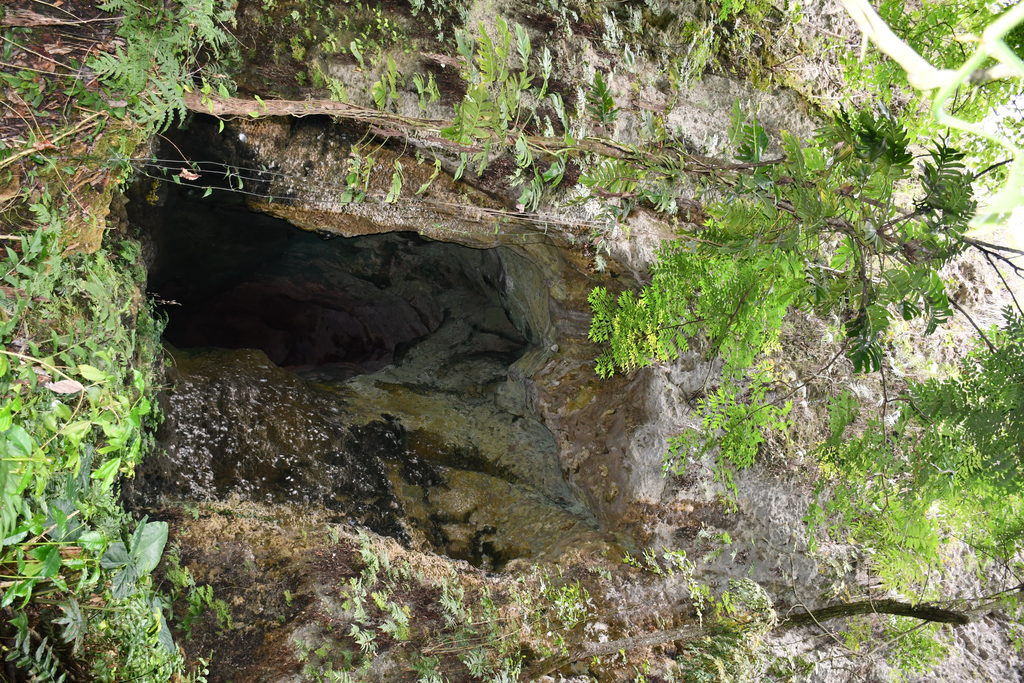IF you travel past the rugby-mad town of Sigatoka and follow the snaking road that goes up the left side of the Sigatoka River bank, you can’t miss the enjoyment of meandering into the heart of Fiji’s Salad Bowl.
After one hour of travelling you’ll notice the verdant green of both river banks slowly turn into semi dry earth that spreads to the foothills of towering undulating mountainsides.
Apart from the dry air you breath in, the unobstructed beauty of the variegated valley floor and the allure of the sparkling Sigatoka River are just some things that you will visually absorb.
Every now and then, the diverse ecosystems outside your car windows will either tease you with a feeling of poignant solitude or the joy of rhapsodic euphoria.
Deep within this life-sustaining part of Viti Levu, and ruled by rolling montane ranges, are keepers of ancient oral stories that have been passed down for many generations, as well as landmarks that have stood the test of time.
In the district of Namataku in the highlands of the Nadroga/Navosa province, is the Tatuba Cave.
Lesser known than the popular Naihehe, Wailotua and Sawa-i-Lau caves, Tatuba, nevertheless, has its own claim to fame.
Onisimo Naioko, a Sawene Village elder said the drodro ni valu (war fort) belonged to his ancestors, who once lived near the cave and regularly used it as a place of refuge during the days of tribal wars and conflicts during the period of British colonial rule.
The Sunday Times team and a group of local guides visited the cave in mid-October.
Like most caves in Fiji, Tatuba possesses a mystic and deceiving appearance. Its two entry points welcomes visitors with an air of dominance.
According to experts the caves of Tatuba were formed by the constant flowing of water through an outcrop of limestone.
They also say the caverns of Tatuba extend for approximately 420 m, and in some instances the chamber ceilings reach a height of 25m.
The caves were surveyed by biologists and speleologist in the 1970s and 1980s.
The entry into one of the two main openings has a cliff made up of layered stones.
Inside the cave is a place called Dre na bukete or Oso na bukute (meaning a passage where pregnant women get stuck) which is the place where everyone gets to crawl to get ahead.
From the tiny passage, the crawlers go past narrow stone walls but with a very high ceiling, eventually leading to a stream.
“Our ancestors would hide inside the cave and club enemies from inside as they crawled through Dre na bukete,” Naioko said.
“Certain parts of the cave are slippery and steep which made accessing it a challenge. The cave could not be breached and because of this our ancestors were hard to defeat and capture in the olden days.”
The layered stones at the mouth of the cave were put in place at some time in ‘prehistory’, according to experts.
At its entrance is a thick deposit of guano, from the droppings of sheath- tailed bats and the white-rumped swiftlets (known by locals as kakaba) that use the cave as a roosting area.
Guano is used widely by local farmers in Navosa because of its high content of nitrogen, phosphate, and potassium, all essential for plant growth.
“The inside of the cave is like another world, the kind you find in movies. It is pitch black and that drives fear in you and can make you shiver in horror. We had to use six light sources,,” said The Fiji Times photographer, Sophie Ralulu.
“I’ve visited a number of caves but this one was the biggest and the scariest. You literally feel like you are in the belly of a beast. You get in feeling curious and come out feeling stunned and mentally defeated.”
Dre na bukete is the smallest space one has to go through in the cave. It can create a claustrophobic sensation.
One of the most amazing parts of the cave is its worship place, which has a large door-like roof and a floor that looks like a stone escalator.
“This is where our ancestors used to worship their deities during the olden days,” said Ravuama Latilevu.
“According to what I’ve heard, there was once a strong warrior (qaqa) by the name Nadabe who led our people. He was physically and supernaturally powerful. Spears could not penetrate him.
“In those days, worship of deities was important to get protection and favour. That’s why you will find that there’s a worship space inside the cave. Even when seeking refuge, they sought power from their god.”
Latilevu is somewhat the keeper of Tatuba cave. When visitors and tourists want to pay a visit, they will first stop at his residence to seek permission from him.
He gives them a rope as a sign of concurrence, which is used to help people get around the internal parts of the cave.
According to Julie Field, author of ‘Investigations of the sites of Tatuba Cave’, oral histories recounted by the Tui Namataku and his relatives, suggested that mountain tribes from as far as the Wainimala River had sought control of Tatuba.
She said the people of Namataku were understood to have migrated from Nadi by advancing to the upper reaches of the Sigatoka River and gained control of Muawai and Tatuba. This may have happened between AD 1780 and 1800.
Naioko said they were plans to make Tatuba a tourist attraction.
“For me the best part was seeing the light at the end of the passage, where we got out from. That was a relief because all throughout the journey, I was overwhelmed by fear,” Ralulu said.
“At one point, I thought we were going to get stuck in the cave for good. But I am lucky to be alive today to tell my story.”
History being the subject it is, a group’s version of events may not be the same as that held by another group. When publishing one account, it is not our intention to cause division or to disrespect other oral traditions. Those with a different version can contact us so we can publish your account of history too — Editor.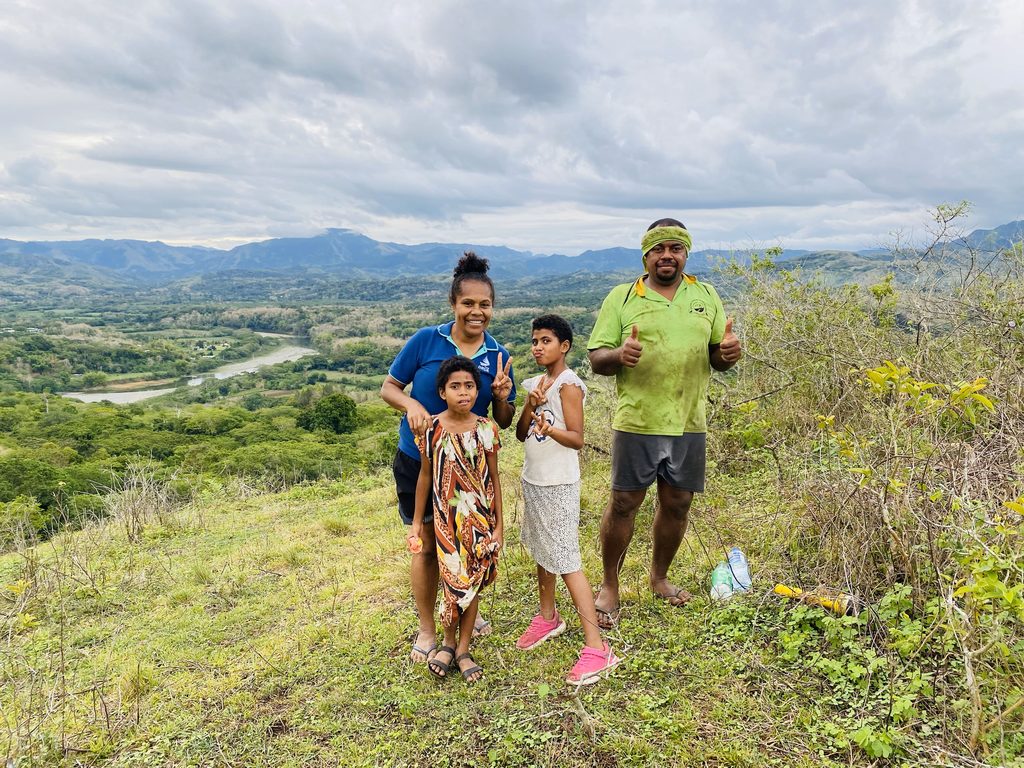
Everyone is all cheers after getting out of the cave and reaching the mountain top. Picture: ENIMOA LATU
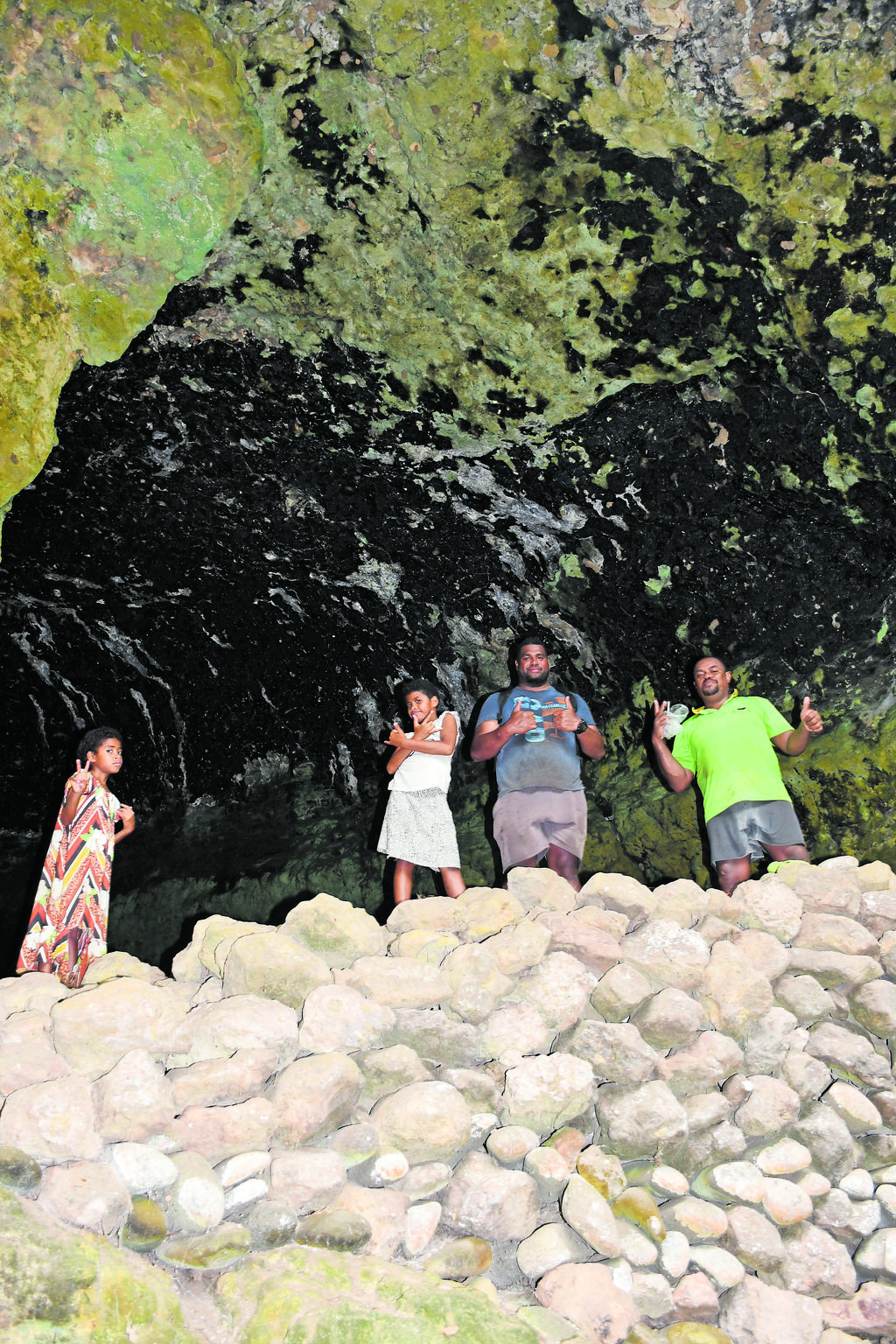
The entrance to the main Tatuba cave in Navosa lined with a cliff of layered stones. Picture: SOPHIE RALULU
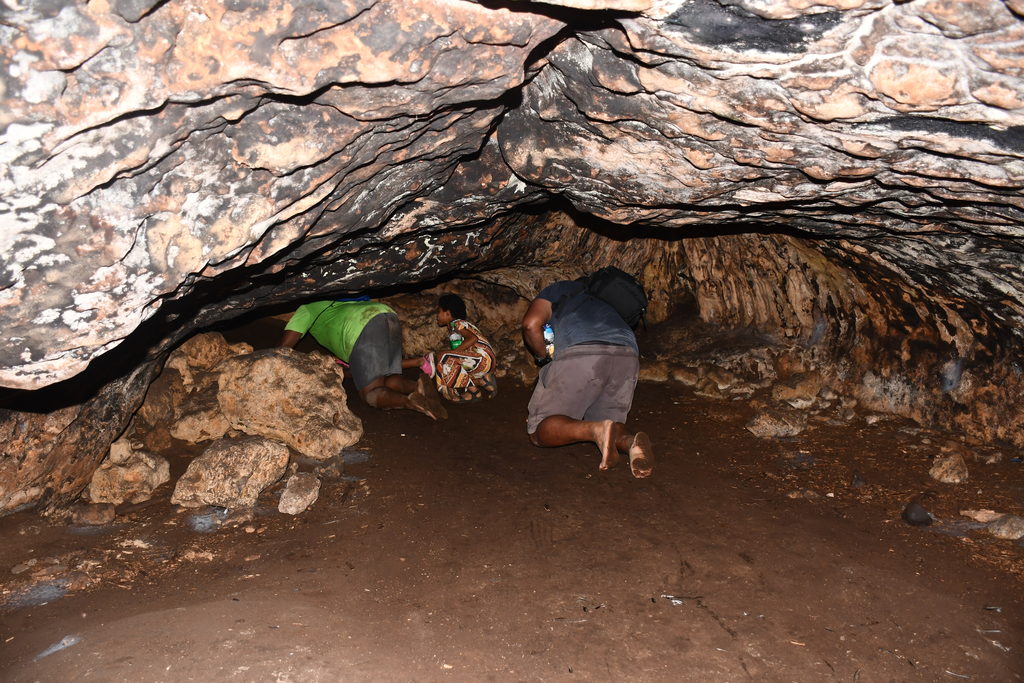
Portion in the Tatuba cave which is called the oso na bukete. All visitors to the inner parts of the cave have to crawl through this narrow gap. Picture: SOPHIE RALULU

Enimoa Latu points at the portion of he Tatuba cave called the qara ni bukete . Picture: SOPHIE RALULU
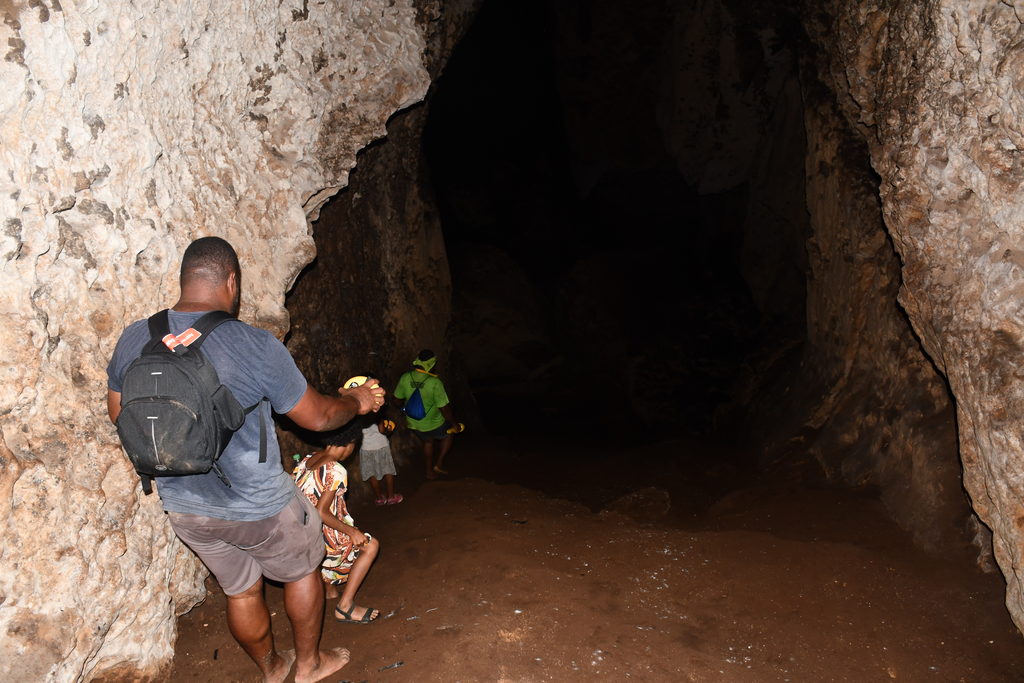
The passage in the Tatuba cave in Navosa starts to descend. Picture: SOPHIE RALULU
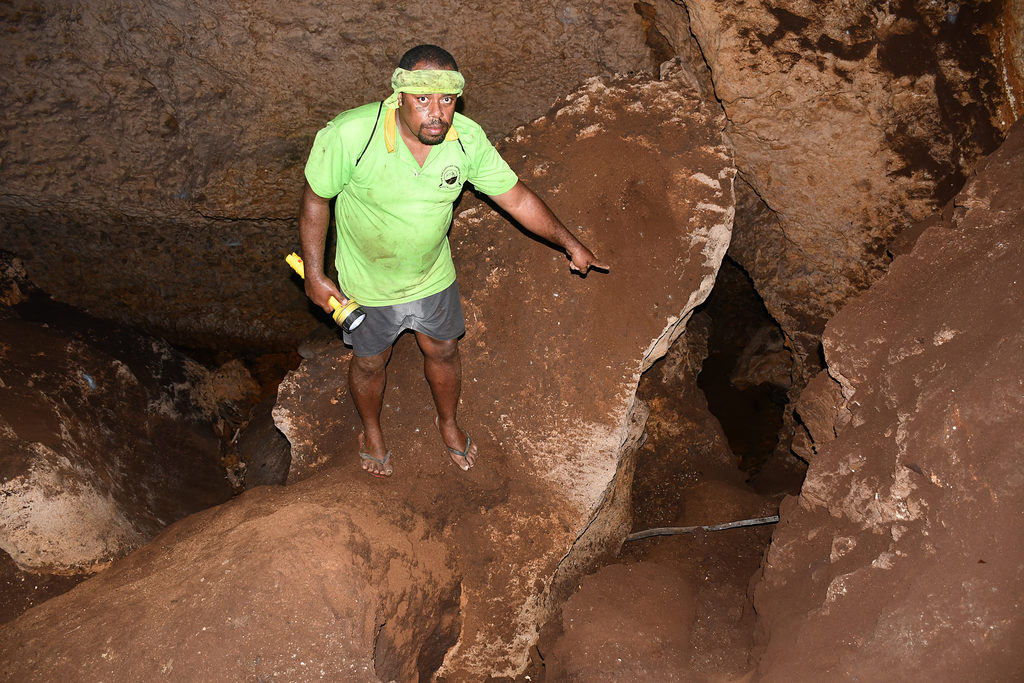
Ulaiasi Tamata points to the place in the cave where villagers collected water from. Picture: SOPHIE RALULU
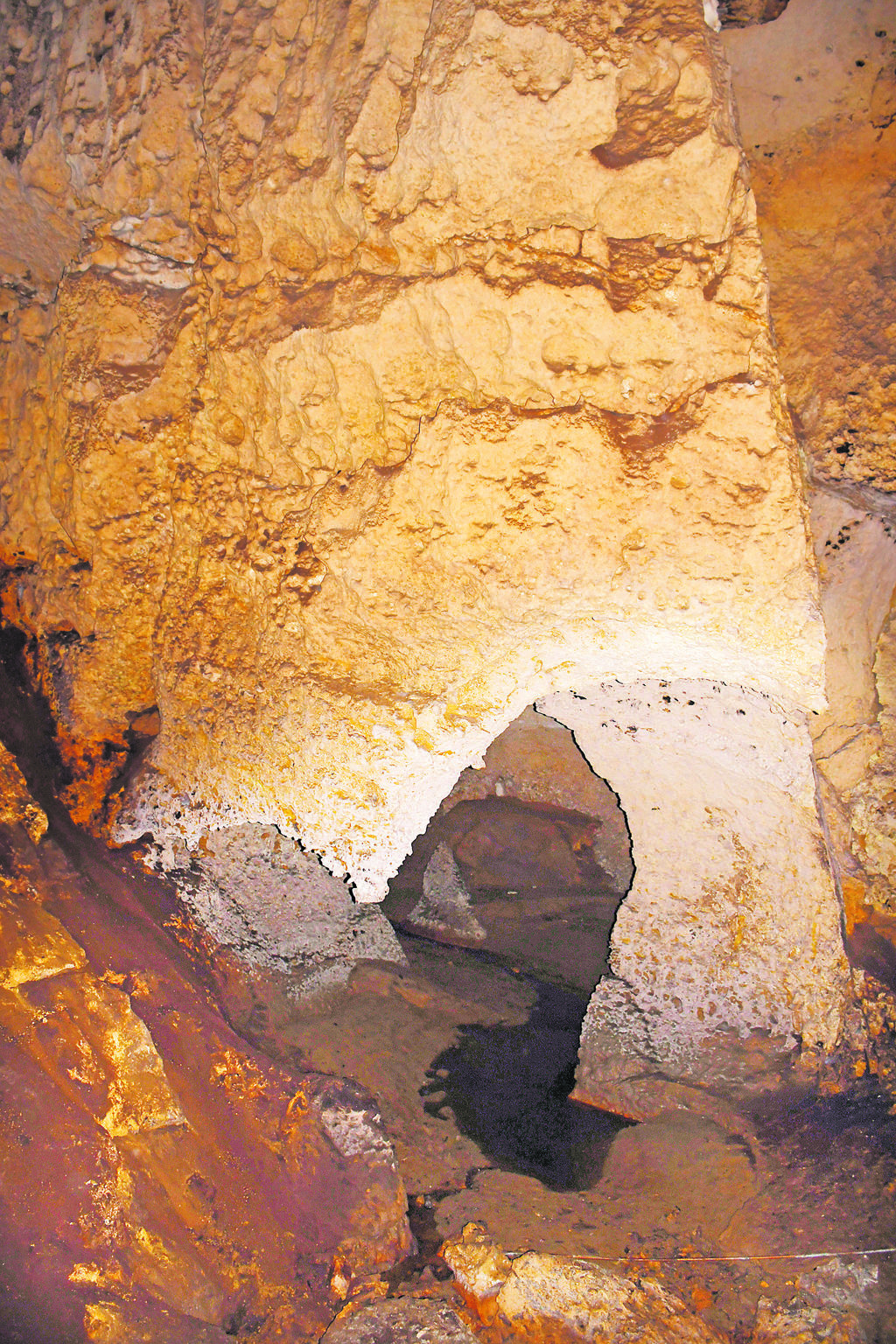
Part of the Tatuba cave where people collected water from for used in the daily. Picture: SOPHIE RALULU
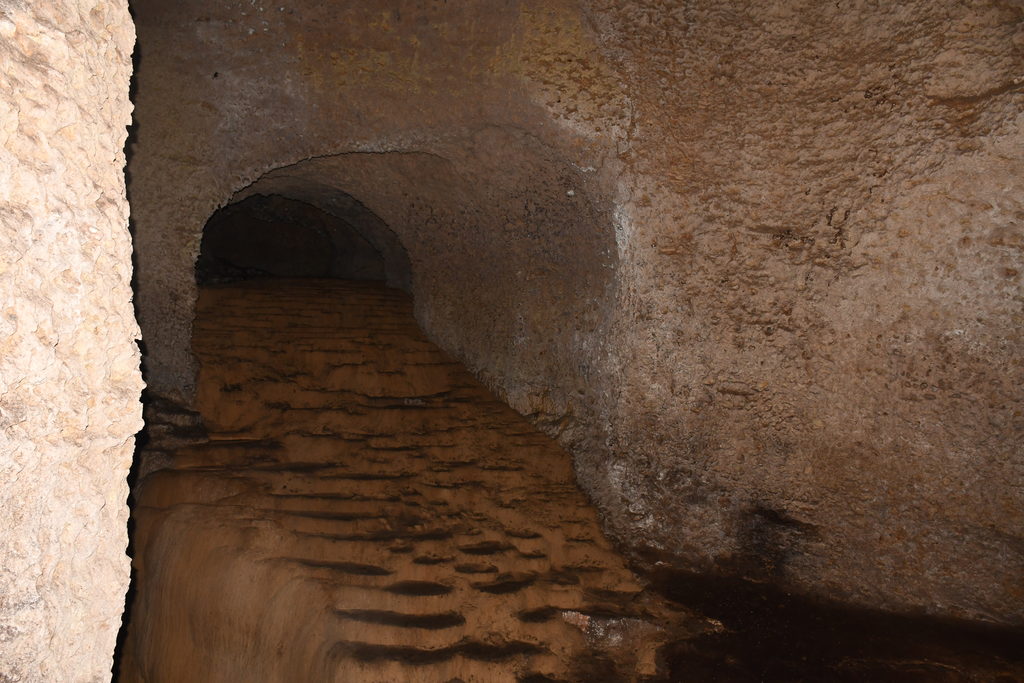
Part of the cave that people used for worshipping.
Picture: SOPHIE RALULU
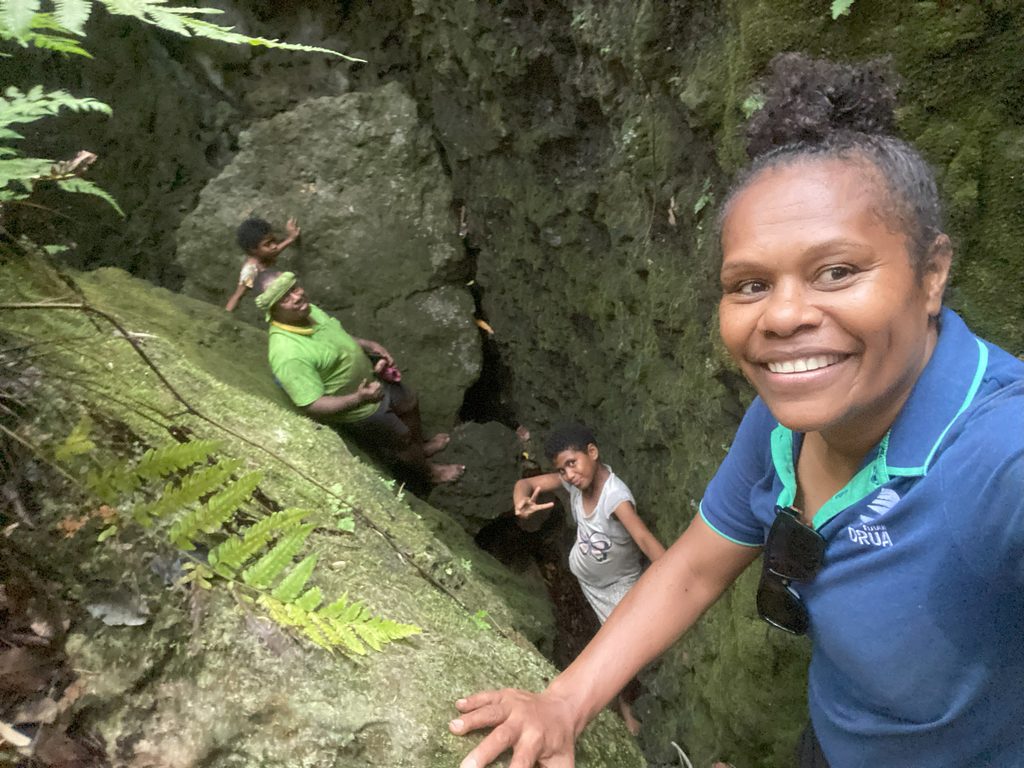
The team emerges from within the cave and reach the exit point. Picture: SOPHIE RALULU

